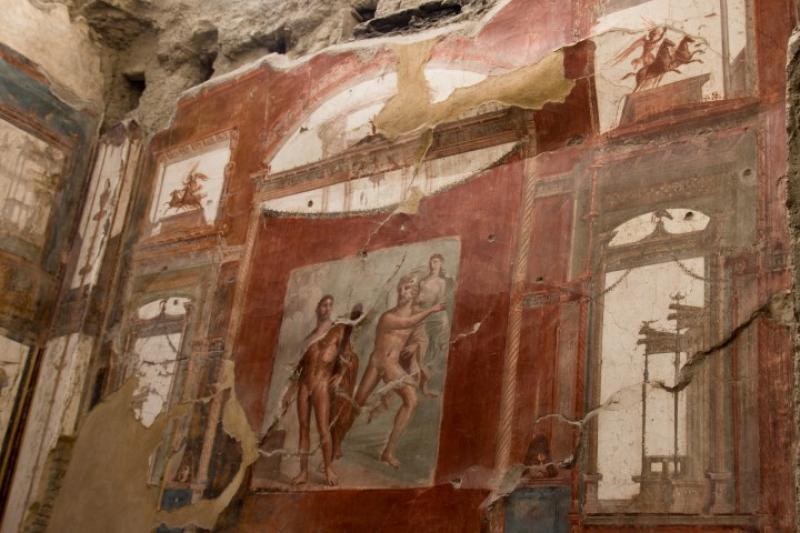
The lost city of Herculaneum
By Laura Blake
Almost everyone is familiar with the tragedy of Pompeii, an entire city decimated in 79 AD by a volcanic eruption. But Mount Vesuvius destroyed more than one town that fateful day. The city of Herculaneum, although unjustly less famous than its neighbour, is in fact in a sufficiently better state of preservation, making it the ideal destination for those seeking to uncover the secrets of Roman Italy.
Herculaneum was a rich seaside port. An extremely wealthy town, many of the buildings displayed lavish marble cladding – and much of these traces of opulence can still be seen. In fact, Herculaneum remains one of the best examples of an ancient city that can be seen in its original splendour, due to the nature of the devastation that beset the town.
Unlike the city of Pompeii that was destroyed by burning lapilli, Herculaneum was instead decimated by a pyroclastic flow – a ground hugging avalanche of hot gas and ash that carbonised all in its path. Whereas the roofs of Pompeii’s buildings were crushed under the weight of falling pumice stone, only the lower storeys of the city’s buildings were buried in ash, preserving the upper floors in greater detail. The intense heat of the pyroclastic ash also served to instantly preserve a vast number of everyday objects, such as wooden furniture and even food.
Herculaneum was re-discovered in the early 18th Century at a depth of 50-60 feet below the modern surface. Efforts for archaeologists, most notably Charles Waldstein of England, to have the site fully excavated has allowed a clearer picture of what the ancient city once looked like to develop. A long and winding main road curves around the forum, whilst many of the town houses command excellent views of the stunning bay. An underground theatre remained largely intact, whilst a swimming pool and traditional Roman baths also managed to escape the worst of the destruction.
The citizens, however, were not so lucky. Since Herculaneum lay to the west of Vesuvius, the city was only mildly affected by the first phase of the eruption – only a few centimetres of ash fell, causing very little damage but nonetheless prompting many to flee. Because initial excavations revealed only a few human skeletons, it was long thought that the citizens were successful in their evacuation attempts. However, in the 1980s and 90s archaeologists discovered some 300 skeletons huddled close together along the sea shore and in the nearby boat houses. It is thought that these are the remains of those who fled to the beach to await rescue by sea, but were killed by the intense heat that rolled through the city before help came. Hit by a wave of hot gas that must have reached a temperature of around 500˚C (932˚F), death would have come instantly for all those left behind.
Despite the catastrophic story Herculaneum now tells, it still remains one of the most important and fascinating links to the past afforded to travellers. To experience the city in depth, allow for a few hours and let the hauntingly preserved ruins pull you back into the Roman era.
Share this article:



















